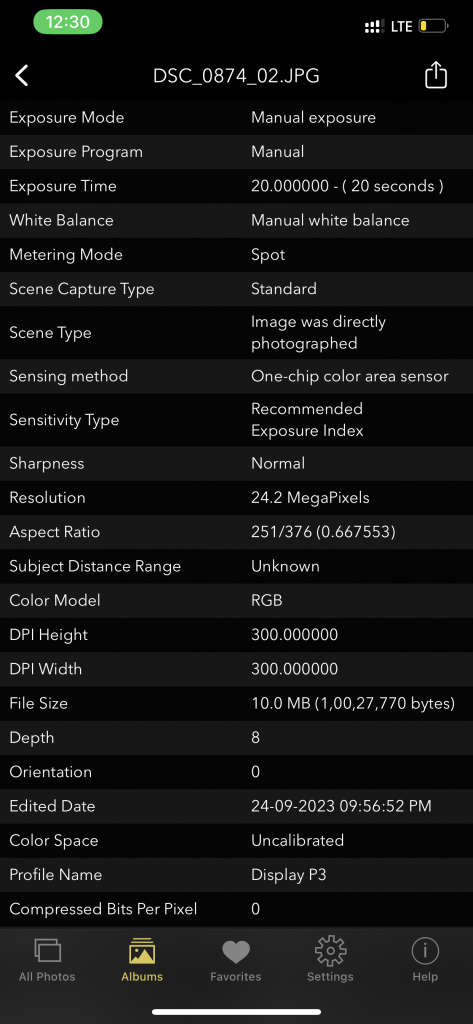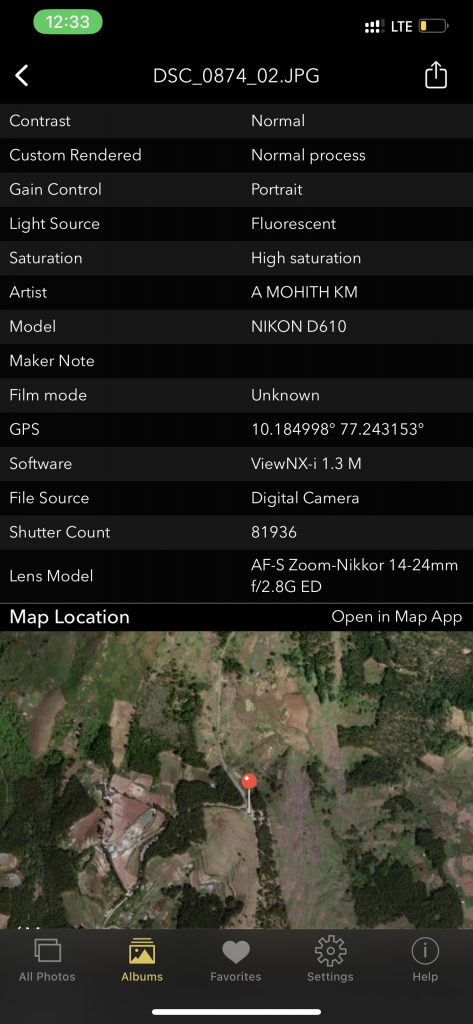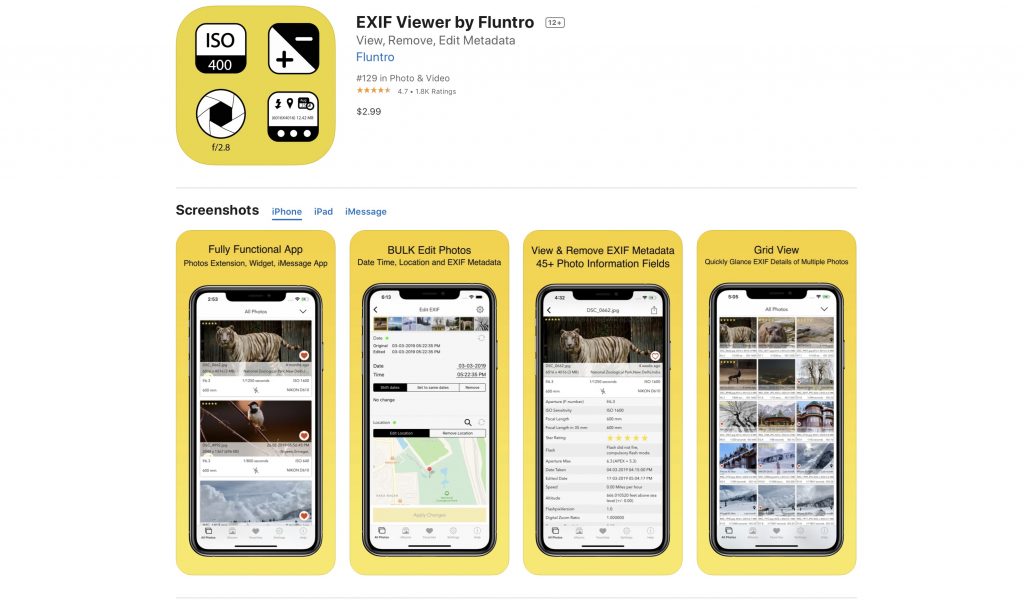Astrophotography, the art of capturing celestial wonders through the lens of a camera, has always held a special place in the hearts of astronomers and photography enthusiasts alike. With advancements in technology and the availability of powerful cameras, astrophotography has become more accessible than ever before. One of the invaluable tools in the arsenal of astrophotographers is EXIF data, which offers a treasure trove of information about each captured image. In this blog, we will explore the unique challenges and opportunities of using EXIF data in astrophotography.
What is EXIF Data?
EXIF, short for Exchangeable Image File Format, is a metadata standard used by digital cameras and smartphones to store information about an image. This metadata includes details such as the camera settings (shutter speed, aperture, ISO), the make and model of the camera, date and time of capture, and even the GPS coordinates of the location where the photo was taken.



On iOS: Screenshot of EXIF Viewer by Fluntro app displaying detail view of all exif information of a photo
Challenges in Astrophotography
- Long Exposure Times: Capturing stunning images of galaxies, nebulae, and other deep-sky objects often requires long exposure times, sometimes spanning several minutes or even hours. This presents a unique challenge as it can lead to sensor noise, hot pixels, and other artifacts that need to be carefully managed.
- Precise Tracking: To prevent star trails and ensure pinpoint sharpness, astrophotographers use equatorial mounts or star trackers to follow the apparent motion of the stars. Coordinating camera settings with the tracking equipment is crucial for successful astrophotography.
- Dark Skies: Light pollution from urban areas can drastically affect the quality of astrophotographs. EXIF data can help astrophotographers determine the level of light pollution at a particular location, aiding them in choosing the best spots for their shoots.
Opportunities with EXIF Data in Astrophotography
- Image Analysis and Enhancement: EXIF data provides a detailed record of the camera settings used for each image. This information is invaluable for post-processing. Photographers can analyze the data to understand what worked best for a particular shot and use it as a reference for future endeavors.
- Tracking Accuracy: EXIF data helps astrophotographers ensure that their tracking equipment is functioning correctly. By cross-referencing the captured images with the timestamp and celestial coordinates, they can identify any tracking errors and fine-tune their equipment for improved results.
- Location Scouting: GPS coordinates stored in EXIF data can be used to document the ideal locations for astrophotography. This information helps astrophotographers revisit successful spots or share their favorite dark sky locations with the community.
- Collaboration and Learning: The astrophotography community is vast and passionate. EXIF data allows photographers to share their experiences, techniques, and camera settings with others. This facilitates collaboration and learning, helping enthusiasts grow their skills and knowledge.
EXIF Data and Citizen Science
Beyond personal enjoyment and artistic expression, astrophotography plays a significant role in citizen science. EXIF data can contribute to projects such as monitoring changes in the night sky, tracking celestial events, and even discovering new celestial objects. Amateur astrophotographers armed with their cameras and EXIF data can make meaningful contributions to our understanding of the universe.
Astrophotography is a breathtaking blend of art and science. EXIF data serves as both a record of the technical aspects of each photograph and a bridge to connect astrophotographers and astronomers worldwide. It enables photographers to overcome challenges unique to astrophotography while seizing opportunities for improvement and collaboration. With EXIF data in hand, astrophotographers continue to push the boundaries of what can be captured through the lens, sharing the wonders of the cosmos with all of humanity.
ENABLE METADATA OPTIONS:
You can view exif information any of your devices.
There are also apps that shows EXIF metadata for images saved on your device. For iOS user we suggest “Exif Viewer by Fluntro“.
- Download an EXIF viewer app from the App Store, such as “Exif Viewer by Fluntro.”
- Open the app, import your photo, and View and Remove the EXIF data.
Appstore Link: – https://apps.apple.com/us/app/exif-viewer-by-fluntro/id944118456

Checkout the preview video of Exif Viewer by Fluntro:
One thought on “Unveiling the Cosmos: Harnessing EXIF Data in Astrophotography”